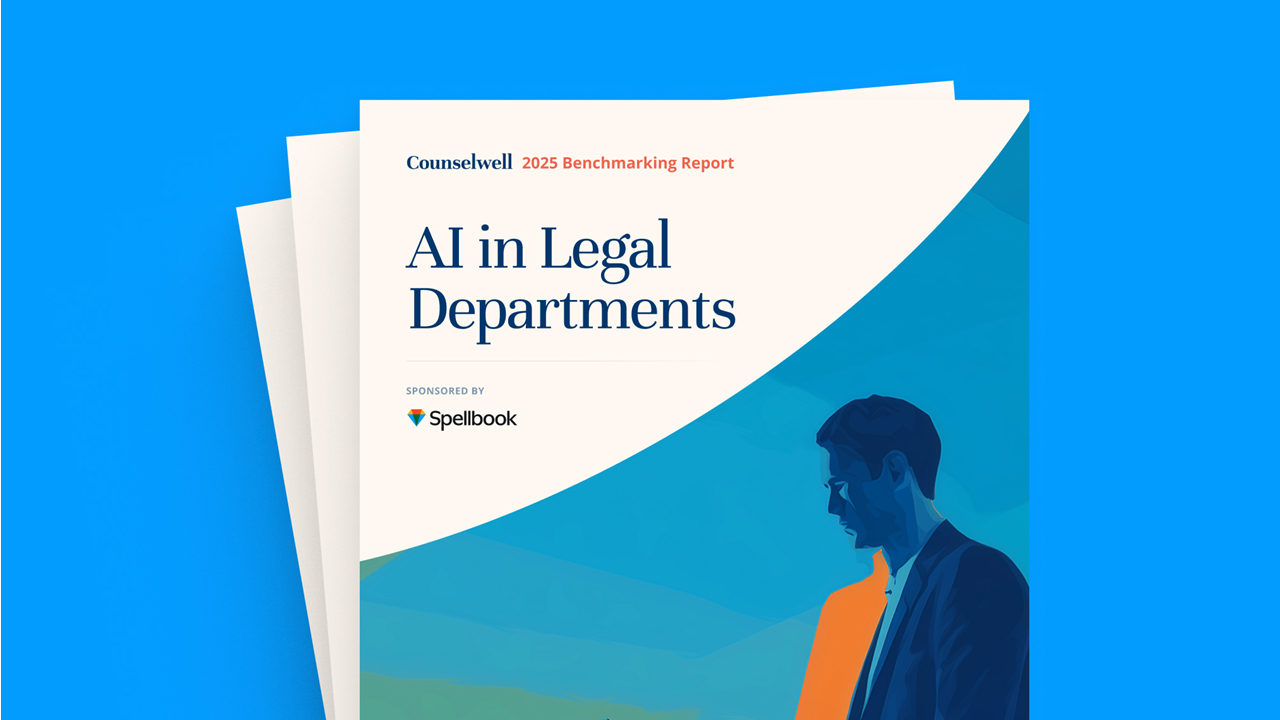A new benchmarking study reveals that artificial intelligence adoption in corporate legal departments is gaining momentum, with 38% of surveyed teams already using AI tools and another 50% actively exploring implementation. However, significant barriers around trust, data privacy, and measurement persist as the legal profession navigates this technological shift.
The inaugural AI in Legal Departments: 2025 Benchmarking Report, published this week by Counselwell and Spellbook, surveyed 256 in-house legal professionals across North America to understand current AI adoption patterns and future expectations.
Ninety percent of the respondents were in-house lawyers, with the majority (86.8%) based in Canada and 10.5% in the United States.
Contract Work Dominates AI Use Cases
Among legal departments already using AI, contract-related tasks are the clear leader in use cases. Sixty-four percent of AI users employ tools for contract drafting, review, and analysis, followed by legal research (49%) and document translation (38%).
Looking ahead, respondents expect significant expansion into operational areas over the next 1-2 years, with 32% planning to adopt legal operations and workflow automation tools and 28% considering document automation.
“The results show a clear trend: legal departments are starting with foundational AI applications like contract drafting and legal research, but are preparing to expand their AI usage into broader operational areas,” the report states.
ChatGPT Leads Tool Adoption
When it comes to specific platforms used by legal departments, ChatGPT dominates, with 74% usage among AI-adopting respondents. Microsoft Copilot follows at 40%, while legal-specific tools such as Spellbook capture 22% adoption. Rounding out the top platforms are tools such as Gemini (17%) and Claude (11%).
Nearly universal satisfaction marks early AI implementations, with 97% of users reporting their tools are somewhat (63%) or highly (34%) effective. Among active users, 68% engage with AI tools daily or weekly, suggesting these technologies are becoming integral to legal workflows.
However, trust remains a significant barrier. Sixty percent of respondents cited “lack of trust or quality in AI outputs” as their top implementation challenge, followed closely by data privacy concerns (57%). These concerns far outweighed traditional barriers like cost (33%) or system integration issues (36%).
ROI Still A WIP
While 83% of users cite increased efficiency as the primary benefit of AI adoption, formal measurement of return on investment remains underdeveloped. Only 7% of departments use specific KPIs to track AI value, and 40% of respondents remain “not sure yet” whether their AI tools are worth the investment.
Monthly spending on AI tools remains modest for most departments, with 26% spending under $100 per month and only 9% spending more than $2,000 monthly. However, 44% of respondents didn’t know their department’s AI spending, suggesting budget tracking may also need refinement.
Looking ahead, legal professionals express measured optimism about AI’s impact on their roles. Sixty-four percent believe AI will automate some tasks without replacing lawyers, while 26% expect more fundamental changes to how in-house lawyers operate. Only 10% anticipate minimal impact.
When it comes to decision-making, 66% favor AI playing a supporting role by suggesting options while keeping lawyers in control, with just 1% supporting full AI autonomy in legal decisions.
Knowledge Gaps Remain
Despite growing adoption, significant knowledge gaps remain. While 59% of respondents describe themselves as “somewhat familiar” with AI tools, only 24% feel they have strong understanding of AI fundamentals and implications for legal work.
Organizational readiness also varies widely. While 48% of organizations have implemented AI policies or guidelines, 26% are still developing them and 21% lack policies entirely.
When asked what’s missing from the AI discussion in legal, respondents highlighted three key areas: the need for better training and skill development, concerns about AI accuracy and reliability, and the lack of clear regulatory guidelines.
“Lawyers need to be trained on AI prompting to get the full value from GenAI tools. If you don’t ask the right questions, you will never get the right answers,” one respondent noted, reflecting broader calls for enhanced AI literacy among legal professionals.
The survey found that legal departments at technology companies are leading the adoption wave, with 36% of AI-using respondents working in the tech sector, despite tech companies representing only 23% of all survey participants.
Bottom Line
The report positions itself as “a valuable early benchmark for in-house legal teams navigating the rapidly evolving legal AI ecosystem” while highlighting opportunities for improved training, clearer ROI frameworks, and stronger organizational policies.
As the legal profession continues to grapple with AI integration, this data suggests that while early adoption is promising, success will depend heavily on addressing trust, training, and governance challenges that currently limit broader deployment.
While the findings indicate that AI in legal departments is moving beyond experimental phases toward practical implementation, significant work remains in developing the infrastructure and expertise needed for mature AI adoption.
 Robert Ambrogi Blog
Robert Ambrogi Blog
